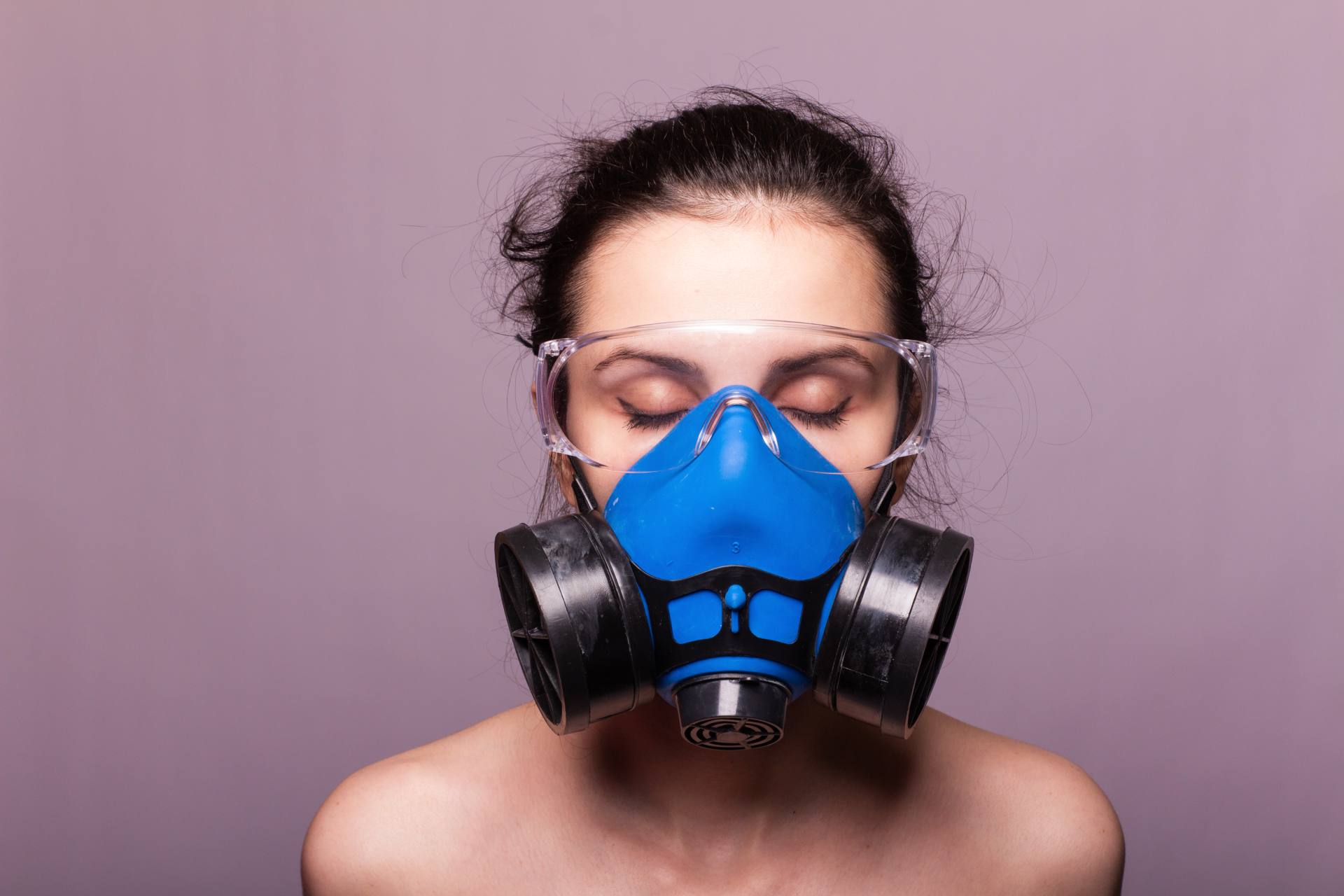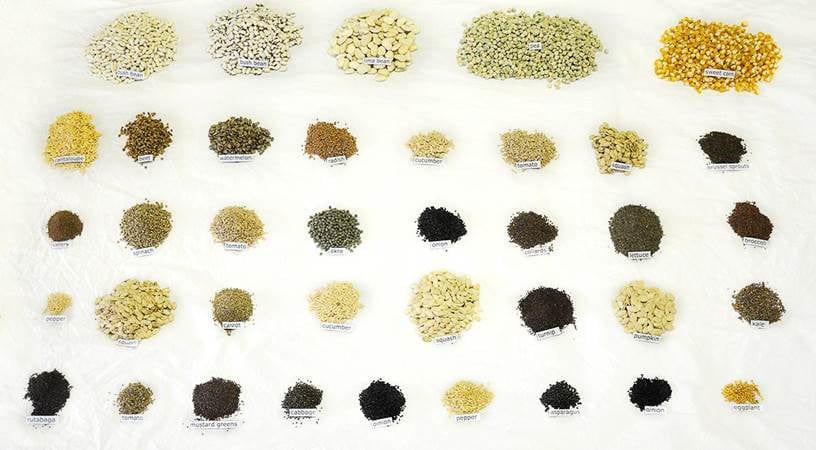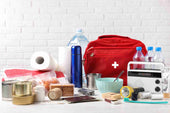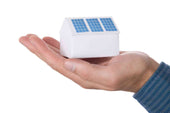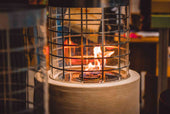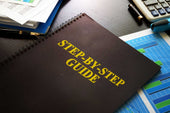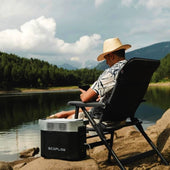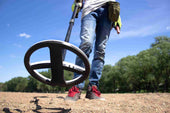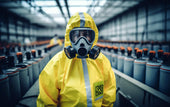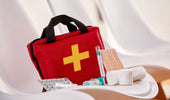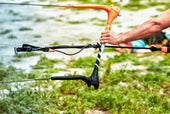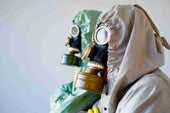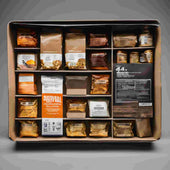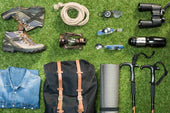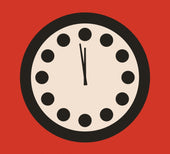Powdered Air Respirators Vs. Supplied Air Respirators
 Indeed, it is very easy to confuse powdered air respirators with supplied air respirators.
Indeed, it is very easy to confuse powdered air respirators with supplied air respirators.
As their names suggest, air respirators use filters, cartridges, or canisters to protect an individual against gases, vapors, aerosols (droplets and solid particles), or a combination of contaminants in the air.
How can you differentiate between powdered air respirators and supplied air respirators?
First, there are two (2) fundamental kinds of respirators: air-purifying and supplied air respirators. Air-purifying respirators eliminate airborne foreign substances, such as particles, harmful fumes, and gases. They are suitable for use in conditions of low-level contamination and where there is adequate oxygen.
Conversely, supplied-air respirators provide clean air from either a portable cylinder or a remote source and are used in excessively hazardous conditions where air-cleaning respirators are not feasible.
Overall, air quality testing and data from Material Safety Data Sheets (MSDS) are used to determine the suitability of respiratory protection.
Powered Air Respirator
Using an electric fan and particle filter, a powered air-purifying respirator (PAPR) eliminates particulates (dust, fumes, and mist) or potentially toxic gases in the workspace.
After the filter eliminates particles, an electric fan sends the purified air to the wearer's facepiece. Consequently, PAPR provides high protective performance and offers substantially more comfortable breathing compared to reusable respirators. It should be worn during high-risk aerosol-generating procedures. These respirators additionally meet CDC guidelines for protection against tuberculosis (TB) exposure.
When you choose a powdered air respirator, it very well may be chosen for use if: (1) the N95 respirator choice(s) doesn't fit, (2) the representative has beard growth or facial issues that would disrupt the mask-to-face seal, (3) the N95 respirator choice(s) are inaccessible in your area, and (4) wanted for high-risk aerosol-producing systems.
Moreover, PAPRs can be utilized by medically approved individuals who can't wear N95 respirators (e.g., those with beards).
A powdered air respiratory system is battery-operated and comprises a half- or full-facepiece, breathing cylinder, battery-worked blower, and particulate filters (HEPA, specifically). The blower passes contaminated air through a HEPA filter, eliminating the pollutant and supplying purified air to the facepiece.
You should also know that it's not a true positive-pressure device, as it may be overhauled while breathing in. For extra protection against body fluids, a face shield may be used in conjunction with a half-mask PAPR respirator.
-
How to Utilize PAPRs?
Individuals should be guided on how to wear, position, adjust, and remove respirators. A medical evaluation is necessary before using PAPRs.
Although generally, the utilization of PAPRs doesn't require fit testing, one should educate themselves about the proper use of this equipment as a respirator before use. -
How to Clean And/Or Disinfect PAPRs?
The suggested cleaning and sanitization methods of PAPR differ among manufacturers.
In an overview, PAPRs should be cleaned according to the manufacturer's recommendations. Be that as it may, to give you an idea, NIOSH suggests cleaning loose-fitting PAPRs by first eliminating the hood or helmet from the respirator and cleaning with a detergent solution.
Next, the suspension inside the headgear should be cleaned in a similar manner. Likewise, the protective face shield should be cleaned and disinfected for optimum results.
The steps for examining, maintaining, and repairing PAPR are simple. First, examine the breathing tube and body of the High-Efficiency Particulate Air (HEPA) filter for any damage.
Then, inspect the hood for physical damage (if parts are damaged, contact the Respiratory Program Administrator immediately). Afterward, check for airflow before using it. In conclusion, follow the manufacturer's suggestions on maintenance, including battery recharging.
Take the PAPR Respirator—MB-90 Battery-Powered Air Purifying Respirator, for instance. It is designed with a full-face respirator/gas mask and 40 mm NATO standard gas mask filters, a fitted head harness, a breathing tube to connect the PAPR to the face mask, and eight (8) AA batteries to ensure functionality.
It is a highly advanced respiratory protection device that filters out harmful airborne particles and gases in industrial, healthcare, and emergency response environments. This lightweight and compact unit offers superior protection, comfort, and convenience, making it ideal for many applications. To learn more about this powdered air respirator, click here.
For more information, there are the so-called Air-Purifying Respirators (APR), which are partitioned into two kinds: Particulate Filtering, which eliminates particulates like residue, fogs, sprays, and exhaust, and vapor; while the other one is called Gas Filtering, which eliminates fumes and gases from the air you breathe in.
Particulate Filtering
Particle-filtering respirators (PFR) obstruct cleaning, such as fogs, vapors, and filaments. The least difficult PFRs are expendable and fit freely over the nose and mouth. Likewise, filter pores become clogged up and cause breathing difficulties. This continuously changes the filter element.
Disposable respirators protect against limited quantities of nontoxic impurities. However, more hazardous materials, such as asbestos strands, require a respirator with a replaceable filter that fits firmly over the face. Unfortunately, a PFR can't protect against gases/fumes or oxygen deficiency.
Gas Filtering
Gases and vapors (from fluids like solvents) are broken down or dissolved in the air and can't be caught with a particle filter. Gas and vapor respirators filter incoming air through at least one chemical-containing cartridge or canister. These chemicals absorb (or ingest) and artificially change the impurity.
They may likewise have a particle barrier. Moreover, a few respirators contain more than one type of cartridge to filter various hazardous fumes immediately. Cartridges are color-coded to recognize which pollutants the filter removes. If you wish to know more, visit the National Institute of Occupational Safety and Health (NIOSH) for a rundown of the color codes and the pollutants against which they safeguard.
Air-filtering respirators (APR) are utilized under the following conditions:
• the wearer is determined as "physically qualified" by a doctor or a professional;
• contaminant identity and concentration are known;
• concentration of oxygen is no less than 19.5%;
• The workspace or area is closely monitored and checked.
• A respirator is endorsed for protection against the particular contaminant and concentration level, and an effective fit test is achieved.
Apart from that, one should know that there are four normal classes of APR facepiece:
A. Disposable Respirators or Dust Masks
They give protection against nuisance dust and particulates.
B. Quarter Mask Respirators
They are utilized with cartridges or cloth filters. The quarter mask fits from the highest point of the nose to the highest point of the jawline. The breathing resistance is higher in comparison to larger masks.
C. Half-mask respirators
They fit from under the jawline to over the nose. A couple of cartridges are used to filter out the air and are discarded once the usage limit is reached. The half-mask has been endorsed for cartridges that protect against pesticides, natural fumes, residue spots, fogs, exhaust, corrosive gases, alkalis, and various chemicals.
D. Full-face respirators
They safeguard the whole face. Full-facial coverings utilize twin cartridges, jawline-mounted canisters, or canisters mounted on the chest or back. All cartridges endorsed for the half-mask are also compatible with the full mask. Several different cartridges are also available for the full mask. Accordingly, every cartridge is intended for use against explicit contamination. Recognizing the foreign substance in the climate is crucial in determining the suitable cartridge.
Supplied Air Respirator
 Atmosphere-supplying respirators give clean breathing air from a source outside the workspace. These respirators will shield individuals from many airborne toxins (particles, gases, and fumes) and, in specific cases, oxygen-deficient climates. There are three types of climate-providing respirators: supplied-air respirators (SARs), self-contained breathing apparatus (SCBAs), and blended SARs/SCBAs.
Atmosphere-supplying respirators give clean breathing air from a source outside the workspace. These respirators will shield individuals from many airborne toxins (particles, gases, and fumes) and, in specific cases, oxygen-deficient climates. There are three types of climate-providing respirators: supplied-air respirators (SARs), self-contained breathing apparatus (SCBAs), and blended SARs/SCBAs.
It is essential to note that respirators should be endorsed by the National Institute for Occupational Safety and Health (NIOSH) Respirator Approval Program and used as part of a comprehensive respiratory protection program, as outlined in the Occupational Safety and Health Administration (OSHA) guideline 29 CFR 1910.134. This guideline incorporates yearly fit testing for all respirators with a tight-fitting facepiece. Moreover, this article will examine the whys and whats of supplied air respirators, also known as SARs.
Furthermore, supplied-air respirators provide a clean source of breathable air. They are used when workplaces contain foreign substances that APRs cannot filter out or when oxygen is lacking.
Additionally, supplied-air respirators are also divided into two types: the Self-Contained Breathing Apparatus (SCBA), in which the wearer carries the air tank, and the Air-Line Respirator, in which the air supply is located some distance from the wearer and is provided to the facepiece by a carrier or air-line hose.
Supplied air respirators (SARs) are utilized under the following conditions:
• highly contaminated air is frequently tracked down in enclosed areas;
• poisonous gases are available;
• oxygen-lacking environments where oxygen is purposely supplanted by one more gas or synthetically spent (by fire or the rusting process);
• air temperature is excessively hot or cold; and
• profoundly harmful conditions like dangerous waste sites.
Supplied air respirators have disadvantages, including limited portability and the chance of crimped or damaged air-line hoses. The independent breathing device (SCBA) is a respirator designed for use in hazardous conditions. The SCBA comprises an air tank connected to a hose that leads to a controller, which supplies thirty (30) to sixty (60) minutes of air to the mask. Typically, the tank is carried on the back.
Furthermore, you should be aware that an SCBA operates in two modes: demand or pressure mode. In demand mode, negative pressure is created inside the facepiece and breathing tubes when air is inhaled. Consequently, the negative pressure pushes down the controller's stomach, opens the admission valve, and permits air to be breathed in. Air flows to the facepiece as long as the negative pressure remains.
In 1987, the National Fire Protection Association (NFPA) disallowed the use of demand-mode SCBAs by fire departments, firefighters, and other emergency response staff. OSHA additionally prohibits the use of demand-mode SCBA gear in any space viewed as Immediately Dangerous to Life and Health (IDLH), 29 CFR 1910.120 (HAZWOPER).
A pressure-demand or positive-pressure mode SCBA consistently maintains positive pressure inside the facepiece. The framework is intended to keep the admission valve open until sufficient pressure is applied to close it.
Pressure develops because air doesn't leave the framework until exhalation. The inside facepiece pressure is always higher than the outer air pressure. Additionally, any spillage from the facepiece outward builds up extra protection.
Supplied Air Respirator Circuits, Fit Testing, and Maintenance
Circuits
Closed-circuit SCBAs (rebreathers) reuse the wearer's exhaled air instead of releasing it into the environment. The exhaled air passes through a soda lime canister, which filters out the carbon dioxide (CO2). The filtered air is then directed to a bag where it is mixed with packaged fluid or compressed oxygen. This restores the oxygen content to approximately 21.5%. The client then breathes the air, and the cycle repeats.
Rebreathers operate in demand mode and are not typically used for firefighting or work involving hazardous materials. They are utilized in mine rescue work since they expand the oxygen supply. An open-circuit SCBA has a stock of compacted breathable air. The wearer inhales normally, and the exhaled air is expelled from the system. As such, the air supply is restricted to the amount the wearer can convey because the air isn't recycled or reused.
An SCBA has a low-pressure cautioning alert system. This alert sounds when at least seventy-five (75) to eighty (80) percent of the air supply has been consumed. This alarms the wearer that 20-25% of his air is accessible for retreat.
However, only twenty percent (20%) of the air supply should be consumed to reach your objective in a dangerous workspace. This permits sufficient air to leave the region as the caution alarms sound.
When the low-pressure warning rings, you should prioritize leaving the region immediately. Before entering a hazardous area, it is wise to establish a clear and safe escape route. OSHA additionally requires the use of the so-called "buddy" system in any condition requiring the use of an SCBA.
Fit Testing
OSHA requires proper fit testing and training before workers utilize a respiratory device at work. By training, one should undergo a familiarization period in normal air. Additionally, two (2) essential facepiece fit tests exist: qualitative and quantitative.
For one, qualitative testing uncovers an individual wearing a respirator in front of a test specialist. The respirator is outfitted with a cleaning component to eliminate the test agent from the air. You'll know it's an exemplary fit if the wearer can't distinguish the entrance of the test agent.
Conversely, quantitative testing gauges the number of impurities in the testing environment and inside the respirator. A correlation between these two numbers decides the effectiveness of the fit.
Essentially, OSHA requires that fit testing be performed before the underlying respirator is used; thereafter, an alternate respirator facepiece is used annually.
Maintenance
Respirators should be examined before and after usage:
• all parts ought to be clean and working appropriately;
• check the facepiece for dry decay, breaks, and openings;
• play out a leak check;
• supplant valves and hoses whenever broken, fragile, or penetrated;
• Check the head harness for damage or deterioration.
• fix free clamps or connectors;
• check for appropriate channel choice and position; and
• supplant harmed or stopped up (or clogged) channels.
Following each use, respirators should be cleaned, sanitized, and stored as indicated by the manufacturer's directions. If respirator use is compulsory due to hazardous levels of airborne contaminants in the working environment, a Comprehensive Respiratory Protection Program should be established and implemented.
If representatives can use respirators to reduce exposure to airborne pollutants, a voluntary respiratory protection program should be created and implemented. The program should conform to OSHA's 29 CFR 1910.134.
The Disparity: Clear or Not?
The Supplied Air Respirator (SAR) and Powdered Air Respirator (PAR) are useful respiratory protection methods.
The only difference between the two is the supplied air system, which includes air hoses, airline respirators, hands-on training, stationary air supplies, and air compressors, as well as the specific types of pathogens, vapors, mists, and fumes that they can be exposed to.
So, if you're considering wearing any of these, assess your needs, the level of hazard in the area, and the type of protection you need.

